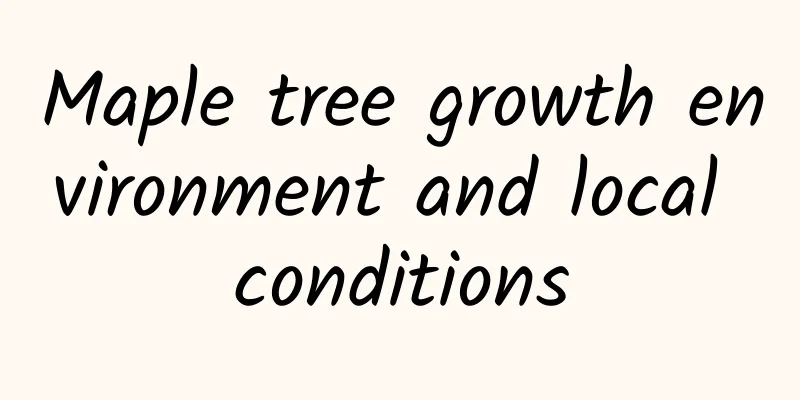What fertilizer is best for peppers?

|
There are many farmers who grow peppers , but they often lack professional training and rely on experience for planting management, especially in fertilization, which limits the improvement of pepper yield and quality. Adopting scientific and reasonable fertilization methods can not only efficiently utilize fertilizers and reduce waste, but also balance soil nutrients and improve soil fertility. Let’s learn what fertilizer is best for peppers? 1. Fertilizer requirements of pepper The root system of peppers has limited extension capacity and mainly absorbs nutrients in the soil layer 10-25 cm above the surface. Therefore, choosing fertile soil and applying sufficient base fertilizer, as well as applying topdressing according to the fertilizer requirements of peppers at different growth stages, are the keys to improving the survival rate and yield of peppers. There are two main principles to follow when applying fertilizer: Adapt to the circumstances: Peppers at different growth stages have different fertilizer requirements. Reasonable fertilization helps peppers obtain sufficient nutrients and promotes the healthy growth of roots and rhizomes. Adapt to the situation: The growth of peppers in different plots is different, and even in the same plot, the growth of different peppers is not exactly the same. When applying fertilizer, you need to consider all aspects and make adjustments based on the fertilizer requirements of overly vigorous seedlings and weak seedlings. At the same time, special attention should be paid to avoid excessive fertilization, so as not to cause soil eutrophication and hinder the growth of peppers. 2. Apply base fertilizer heavily Before planting, the soil should be deeply tilled to release organic matter. The base fertilizer is usually decomposed farmyard manure, mixed with appropriate amounts of urea and potassium chloride. There are two points to note when applying base fertilizer: Composting of farmyard manure: Uncomposted farmyard manure may cause root burn and trigger pest and disease problems. Precision fertilization: Avoid wasting fertilizer by fertilizing the entire field. Apply fertilizer in furrows or holes to help peppers absorb fertilizer. 3. Steady application of planting fertilizer After planting, it is necessary to apply planting fertilizer steadily, mainly urea, control the application amount and promote root growth. Excessive application may cause flower and fruit drop. The purpose of planting fertilizer is to promote the deep vertical penetration and lateral expansion of the pepper root system, so that the above-ground part of the plant can grow rapidly. When applying fertilizer for planting, care should be taken to avoid excessive application of nitrogen fertilizer, topdressing under high temperatures, and concentrated large-scale fertilization. After planting, diseases and insect pests should be dealt with in a timely manner. 4. Skillfully apply flower and fruit fertilizer As peppers enter the flowering and fruiting period, their demand for nutrients increases. When applying fertilizer, you need to choose the right amount of nitrogen, phosphorus and potassium fertilizers to ensure the fertilizer needs during the critical period. The application of flower and fruit fertilizer is divided into three stages: Initial flowering period: Apply diammonium phosphate, and apply urea when growth is weak. Picking period: Apply triple compound fertilizer . Peak fruit-bearing period: spray foliar fertilizer every time the fruits are picked, and apply amino acids or boron fertilizer according to actual conditions. 5. Apply micro-fertilizer Micro-fertilizers, such as calcium, magnesium, boron, iron and other elements, are essential for the growth of peppers. Lack of these elements may lead to various physiological diseases. It is ideal to conduct targeted fertilization based on soil composition analysis and the fertilizer requirement of peppers, but in actual operations, it is necessary to apply heavy base fertilizer to promote pepper growth. In general, a high yield of peppers not only depends on the basic technology of fertilization, but also needs to be combined with field management and pest and disease management. Any inadequate management measures may result in all previous efforts being wasted.
|
<<: How to fertilize chives? What kind of fertilizer is good?
>>: How to care for potted lucky seeds?
Recommend
Why does the lucky tree lose its leaves? How to save it
1. Improper watering 1. Reason: The lucky tree ma...
Can the hawthorn tree be transplanted in winter? In which month can it survive?
Can hawthorn trees be transplanted in winter? Haw...
What to do if orchids do not grow new roots or seedlings (orchids do not grow new shoots after a few months of planting)
An orchid lover asked: My orchid never grows new ...
How to deal with yellow leaves of rice bamboo
1. Control the amount of water Reason: Although b...
The correct way to water flowers with milk powder What are the benefits of watering flowers
Leftover milk powder can be used to water the flo...
Can strawberries be grown in pots?
Can strawberries be planted in flower pots? Straw...
What kind of fertilizer is good for tea base fertilizer (base fertilizer application method)
The role of tea base fertilizer As a perennial ev...
When to harvest beets
Beet harvest time In the first year after beet pl...
Taboos of breeding winter red in winter
Although winter is the flowering season, do not w...
How many years does it take for mulberries to bear fruit?
Mulberry planting results in several years After ...
How to grow fairy finger to make it bloom
Flowering time of fairy finger It usually takes 1...
Which month is the best to plant ginger?
Ginger has relatively loose requirements on soil,...
Cutting propagation method of Haworthia striata
time Haworthia can be propagated by cuttings in b...
The difference between Torreya grandis and Taxus chinensis
1. Leaf Difference The leaves of Torreya grandis ...
The flower language and symbolic meaning of the sleeping lotus
The Flower Language of the Sleeping Fire Lotus Wh...









